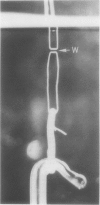Abstract
Transverse viscoelastic extensibility was measured directly in isolated walls of Nitella internode cells. Cell walls extended transversely exhibit a yield point which is approximately twice the yield point in the longitudinal direction. Walls from young, growing cells are four to seven times more extensible longitudinally than transversely, while walls from mature, nongrowing cells are only two times more extensible longitudinally. Although longitudinal extensibility decreases drastically with the decrease in the growth rate, lateral extensibility is constant through development. There is a discrepancy between the lateral growth rate and transverse creep, since the lateral growth rate is not constant. However, the degree of wall anisotropy observed is consistent with the view that the transversely oriented cellulose microfibrils act as a “reinforcing filler” in Nitella cell walls.
Full text
PDF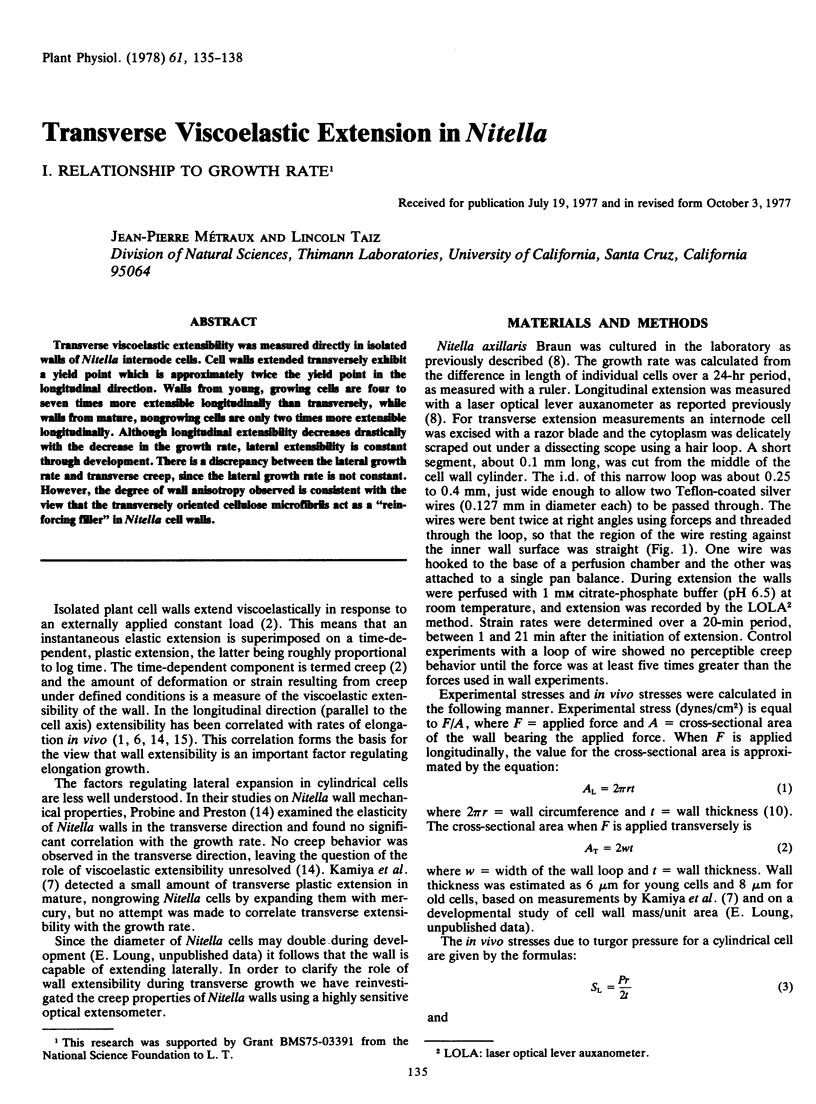
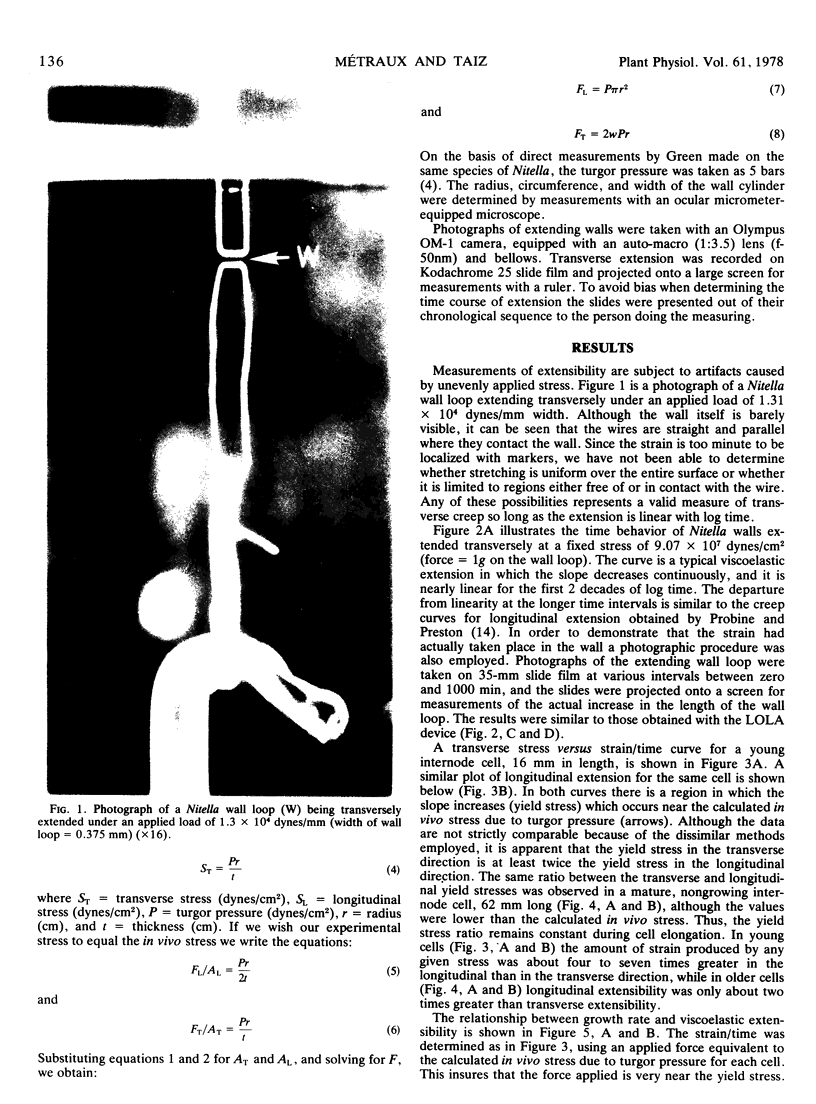
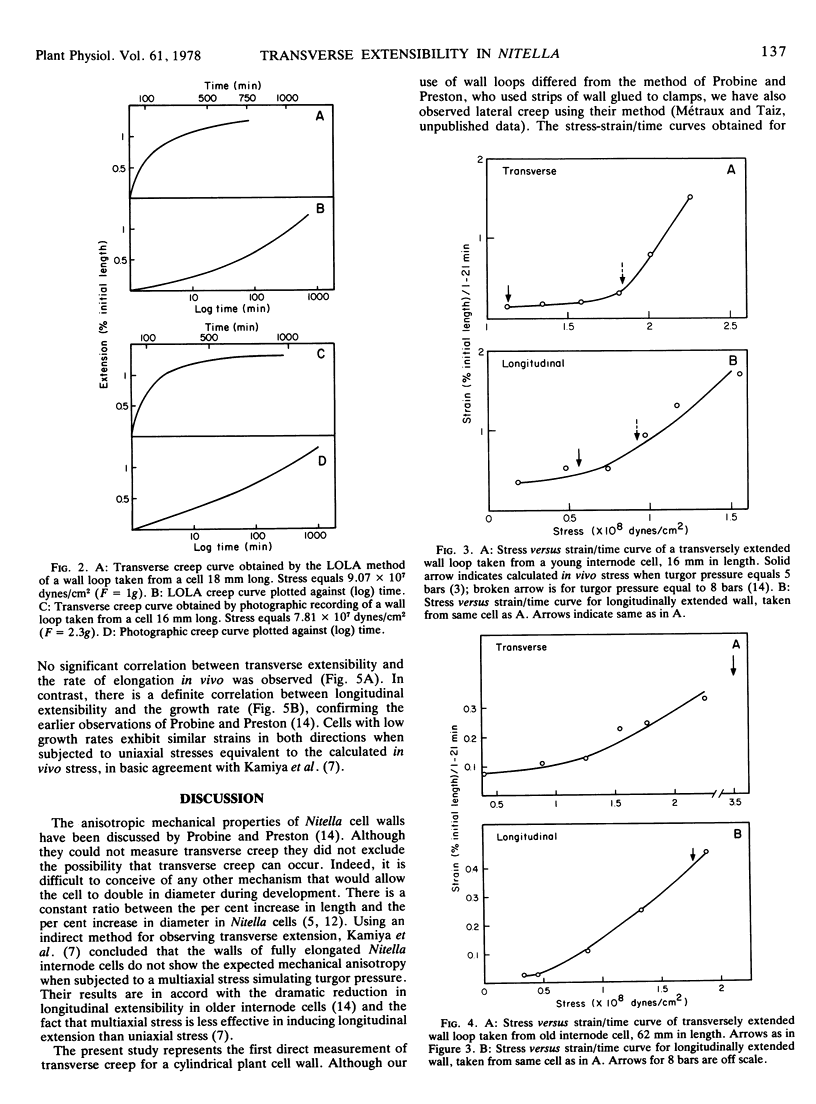
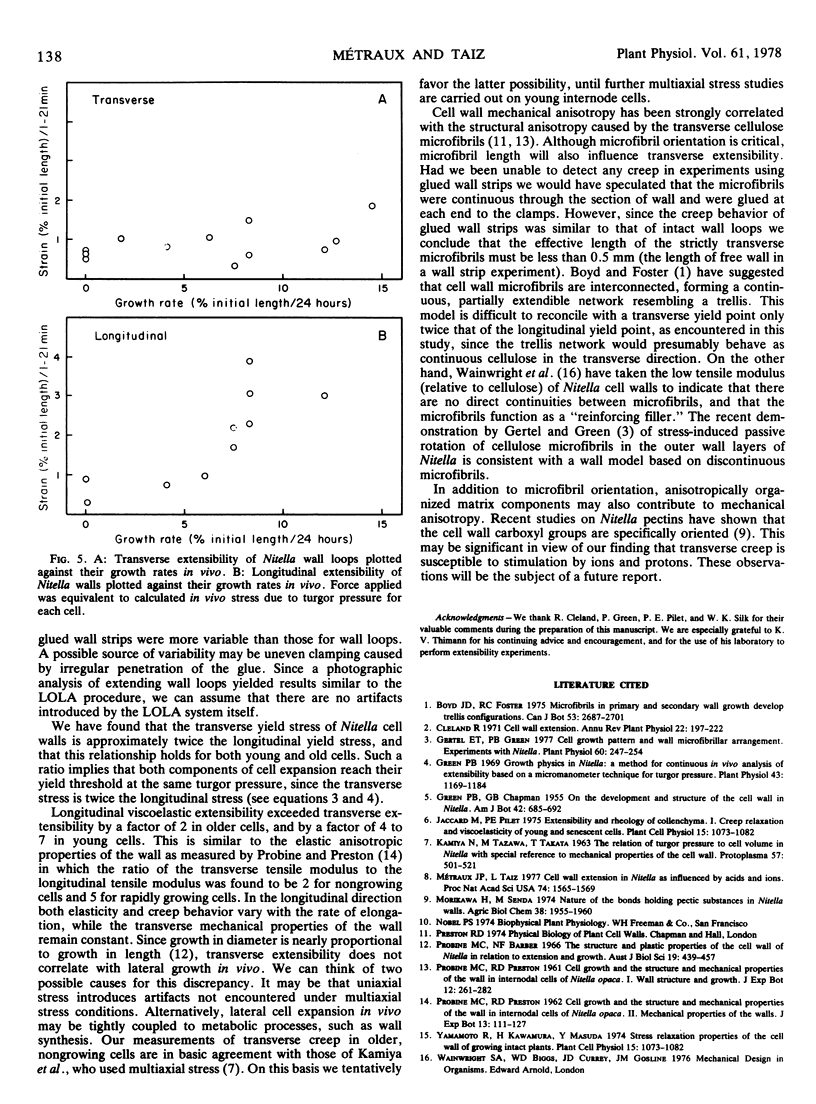
Images in this article
Selected References
These references are in PubMed. This may not be the complete list of references from this article.
- Gertel E. T., Green P. B. Cell growth pattern and wall microfibrillar arrangement: experiments with nitella. Plant Physiol. 1977 Aug;60(2):247–254. doi: 10.1104/pp.60.2.247. [DOI] [PMC free article] [PubMed] [Google Scholar]
- Green P. B. Growth Physics in Nitella: a Method for Continuous in Vivo Analysis of Extensibility Based on a Micro-manometer Technique for Turgor Pressure. Plant Physiol. 1968 Aug;43(8):1169–1184. doi: 10.1104/pp.43.8.1169. [DOI] [PMC free article] [PubMed] [Google Scholar]



